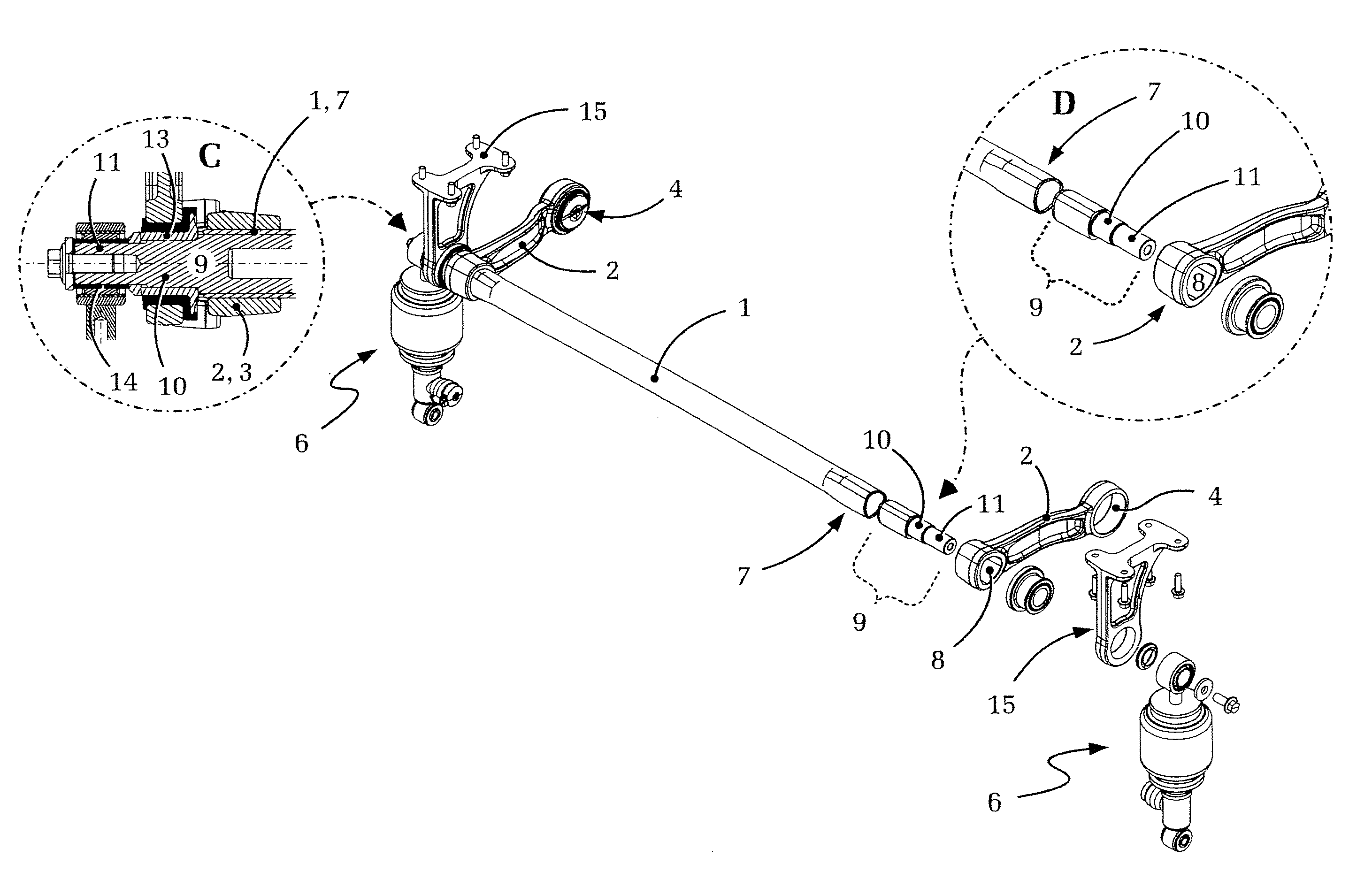Hollow shaft connection device
a technology of connection device and hollow shaft, which is applied in the direction of coupling, roof, transportation and packaging, etc., can solve the problems of high spring rate of the chassis spring in heavy-duty trucks, high stress on conventional connection device, so as to improve the progression of characteristic force lines, save weight, and cost-effective
- Summary
- Abstract
- Description
- Claims
- Application Information
AI Technical Summary
Benefits of technology
Problems solved by technology
Method used
Image
Examples
Embodiment Construction
[0054]FIG. 1 shows a roll stabilizer for a driver's cabin, according the prior art, wherein the represented roll stabilizer has a press-fit plug connection device on each of the two ends. First, the hollow shaft 1 can be seen acting as a torsion element having a torque lever 2 disposed on both ends. To begin with, each of the two torque levers 2 supports two bearing points 3 and 4 provided with elastomer bearings, wherein the bearing point 3 near the shaft serves, in each case, for connecting the roll stabilizer to a driver's cab (not shown) and the bearing point 4, away from the shaft, serves for connecting to the vehicle chassis (also not shown). The function of the bearing point pairs 3, 4 of each of the two torque levers 2—while maintaining the functionality of the roll stabilizer—however, also can be switched, which means that the bearing points 3 near the shaft are hinged to the chassis, and the bearing points 4 spaced from the shaft, in contrast, is hinged to the driver's cab...
PUM
 Login to View More
Login to View More Abstract
Description
Claims
Application Information
 Login to View More
Login to View More - R&D
- Intellectual Property
- Life Sciences
- Materials
- Tech Scout
- Unparalleled Data Quality
- Higher Quality Content
- 60% Fewer Hallucinations
Browse by: Latest US Patents, China's latest patents, Technical Efficacy Thesaurus, Application Domain, Technology Topic, Popular Technical Reports.
© 2025 PatSnap. All rights reserved.Legal|Privacy policy|Modern Slavery Act Transparency Statement|Sitemap|About US| Contact US: help@patsnap.com



